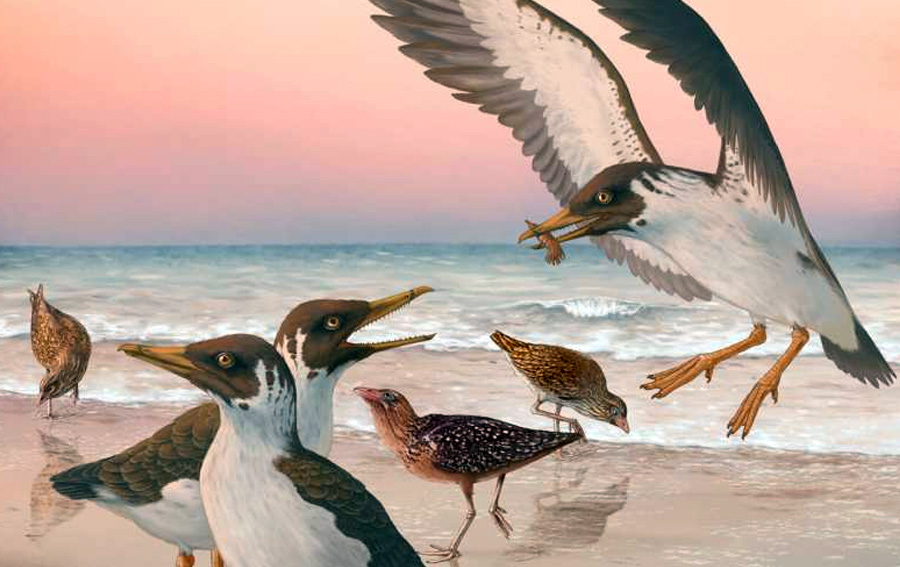The Bird Beak Mystery Said Solved - ATLANTIS RISING THE RESEARCH REPORT (original) (raw)

Fossilized fragments of a skeleton, hidden within a rock the size of a grapefruit, have helped upend one of the longest-standing assumptions about the origins of modern birds.
Researchers Researchers from the University of Cambridge and the Natuurhistorisch Museum Maastricht have found evidence that one of the key skull features that characterizes 99% of modern birds – a mobile beak – evolved before the mass extinction event that killed all large dinosaurs, 66 million years ago (https://www.nature.com/articles/s41586-022-05445-y).
This finding also suggests, say the scientists, that the skulls of ostriches, emus and their relatives evolved ‘backwards’, reverting to a more primitive condition after modern birds arose.
Using CT scanning techniques, the Cambridge team identified bones from the palate, or the roof of the mouth, of a new species of large ancient bird, which they named Janavis finalidens. It lived at the very end of the Age of Dinosaurs and was one of the last toothed birds to ever live. The arrangement of its palate bones shows that this ‘dino-bird’ had a mobile, dexterous beak, almost indistinguishable from that of most modern birds.
For more than a century, it had been assumed that the mechanism enabling a mobile beak evolved after the extinction of the dinosaurs. However, the new discovery, reported in the journal Nature, suggests that our understanding of how the modern bird skull came to be needs to be re-evaluated.
Each of the roughly 11,000 species of birds on Earth today is classified into one of two over-arching groups, based on the arrangement of their palate bones. Ostriches, emus and their relatives are classified into the palaeognath, or ‘ancient jaw’ group, meaning that, like humans, their palate bones are fused together into a solid mass.
All other groups of birds are classified into the neognath, or ‘modern jaw’ group, meaning that their palate bones are connected by a mobile joint. This makes their beaks much more dexterous, helpful for nest-building, grooming, food-gathering, and defence.
The two groups were originally classified by Thomas Huxley, the British biologist known as ‘Darwin’s Bulldog’ for his vocal support of Charles Darwin’s theory of evolution. In 1867, he divided all living birds into either the ‘ancient’ or ‘modern’ jaw groups. Huxley’s assumption was that the ‘ancient’ jaw configuration was the original condition for modern birds, with the ‘modern’ jaw arising later.
“This assumption has been taken as a given ever since,” said Dr Daniel Field from Cambridge’s Department of Earth Sciences, the paper’s senior author. “The main reason this assumption has lasted is that we haven’t had any well-preserved fossil bird palates from the period when modern birds originated.”
The fossil, Janavis, was found in a limestone quarry near the Belgian-Dutch border in the 1990s and was first studied in 2002. It dates from 66.7 million years ago, during the last days of the dinosaurs. Since the fossil is encased in rock, scientists at the time could only base their descriptions on what they could see from the outside. They described the bits of bone sticking out from the rock as fragments of skull and shoulder bones, and put the unremarkable-looking fossil back in storage.
https://www.cam.ac.uk/stories/the-last-toothed-bird

